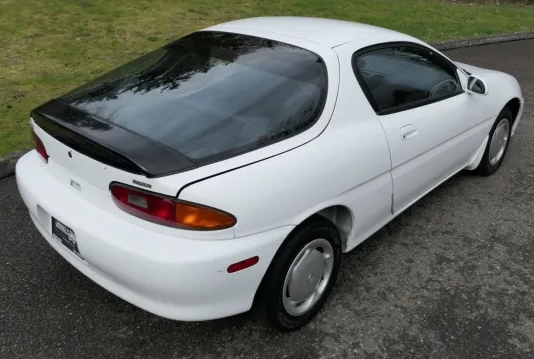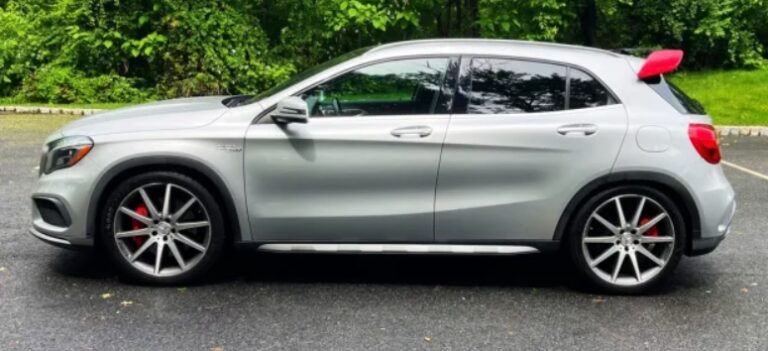The Evolution of the Mitsubishi Endeavor
The Mitsubishi Endeavor stands as a notable example of Mitsubishi Motors’ foray into the mid-size SUV segment in North America. Introduced in the early 2000s, the Endeavor was designed to blend SUV versatility with car-like handling, targeting buyers seeking a comfortable yet capable vehicle. Over its production span, the Endeavor underwent various updates, trim level adjustments, and design changes, reflecting evolving market demands and Mitsubishi’s strategic focus.
Introduction and Production Timeline
The Mitsubishi Endeavor was first introduced in 2003 for the 2004 model year. Its production continued until 2008, with the model officially discontinued after the 2008 model year. The Endeavor was assembled primarily at Mitsubishi’s plant in Normal, Illinois, making it a significant model for Mitsubishi’s North American manufacturing presence.
The vehicle was positioned as a mid-size SUV, competing with models like the Honda Pilot, Toyota Highlander, Ford Explorer, and Chevrolet TrailBlazer. Despite its relatively short production run, the Endeavor garnered a dedicated customer base, appreciated for its smooth ride, spacious interior, and distinctive styling.
First Generation (2004–2008)
Overview
The first-generation Mitsubishi Endeavor was launched in 2003 as a 2004 model. It was built on Mitsubishi’s GS platform, sharing components with other Mitsubishi vehicles, but uniquely styled to appeal to the North American market. It was offered exclusively as a five-passenger SUV and positioned as a premium mid-size vehicle with optional luxury features.
Design and Features
The Endeavor featured a unibody construction, contributing to its car-like handling. Its exterior design was characterized by a rounded, almost SUV-crossover aesthetic with a prominent grille, sweeping lines, and large headlights. Inside, it offered a spacious interior with seating for five, with options for leather upholstery, a premium audio system, and a sunroof in higher trims.
Engine and Transmission
The first-generation Endeavor was equipped with a single engine option: a 3.8-liter V6 engine producing approximately 225 horsepower and 225 lb-ft of torque. This engine was paired with a four-speed automatic transmission, which was typical for SUVs of that era.
Drivetrain Options
Customers could choose between front-wheel drive (FWD) and all-wheel drive (AWD) configurations. The AWD system was designed to improve traction in adverse conditions but was not intended for serious off-road use.
Trim Levels and Models (2004–2008)
Throughout its production, the Mitsubishi Endeavor was offered with various trim levels, each adding features and luxury content. These trims evolved slightly over the years.
2004–2006 Models:
- LS: The base trim, featuring cloth upholstery, air conditioning, power windows and locks, cruise control, and keyless entry.
- LS Touring: Added features such as a premium audio system, alloy wheels, and a sunroof.
- Limited: The top-tier trim, offering leather upholstery, upgraded audio systems, heated front seats, wood interior accents, and a power liftgate.
2007–2008 Models:
In 2007, Mitsubishi refreshed the Endeavor’s styling and added new features, although the trim lineup remained similar.
- LS: Maintained as the entry-level model.
- LS Touring: Continued to add convenience and technology features.
- Limited: Still the most luxurious trim with all available options.
Notable Features and Updates
- 2005 Model Year: Minor updates included new wheel designs and some interior trim adjustments.
- 2007 Model Year: Received a significant facelift, featuring a revised front grille, headlights, taillights, and bumpers. The interior was also upgraded with improved materials and additional tech features, such as optional navigation.
.
Many car aficionados have multiple hobbies, like boating as well as auto stuff. Those who don’t already own a boat (and even some that do), may have thought about building their own boats. It’s really not as hard as you’d think. Just take a look at these easy boat building plans!

.
Market Position and Reception
The Endeavor was praised for its comfortable ride, spacious interior, and relatively refined handling among mid-size SUVs. Its unibody construction provided a smoother drive compared to traditional truck-based SUVs. However, it faced stiff competition from more established models, and Mitsubishi’s limited brand recognition in the segment impacted its sales.
Despite this, the Endeavor gained a loyal following, especially among buyers seeking a reliable, well-equipped vehicle with a strong V6 engine and optional AWD.
Discontinuation and Legacy
After the 2008 model year, Mitsubishi decided to discontinue the Endeavor due to declining sales and shifting market trends favoring crossover SUVs and smaller vehicles. The Endeavor’s discontinuation marked the end of Mitsubishi’s dedicated mid-size SUV offering in North America.
However, the Endeavor’s platform and engineering influenced Mitsubishi’s subsequent SUV designs, and its emphasis on comfort and style contributed to Mitsubishi’s broader SUV lineup.
Post-Production and Collectibility
Today, the Mitsubishi Endeavor remains a respected used SUV, particularly valued for its comfortable ride and solid build quality. Collectors and enthusiasts appreciate the 2007 facelift models for their updated styling and features. Parts availability remains reasonable due to its shared components with other Mitsubishi models.
Summary
The Mitsubishi Endeavor’s evolution from 2004 to 2008 reflects a period of strategic focus on providing a comfortable, reliable mid-size SUV to North American consumers. Throughout its production, Mitsubishi offered a range of trims—LS, LS Touring, and Limited—each adding layers of luxury, technology, and convenience.
While it was produced for a relatively short period, the Endeavor’s emphasis on smooth handling, spacious interior, and distinctive styling ensured it a place in Mitsubishi’s SUV history. Its discontinuation paved the way for newer models and reflected changing consumer preferences, but its legacy persists among Mitsubishi enthusiasts and used SUV buyers.







